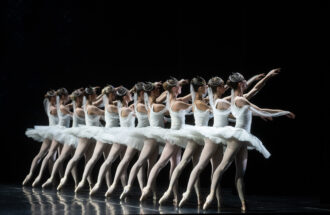
The story of pointe shoes
Pointe shoes lift the dancer above the ground, both literally and metaphorically. They are a symbol of the ballerina’s weightlessness and years of intense training. A young dance student is unlikely to forget the moment when she gets her first pair of pointe shoes. It’s a rite of passage that takes her to the next level as a dancer, on her way to a professional career.
Roots in the Renaissance period
The history of ballet began in the Italian courts of the Renaissance period in the 15th and 16th centuries. What was initially exclusive entertainment of the aristocrats also found popularity in France thanks to Catherine de’ Medici once she became the queen of France in 1547. Ballet Comique de Reine, which she commissioned in 1581, is considered the first court ballet in history. Images of these performances recorded by artists soon spread to other European courts, sparking widespread interest in the new art form. Louis XIV, the king of France, founded Académie Royal de Danse in 1661, which later evolved into the Paris Opera Ballet. Fast forward 20 years and women also started to dance ballet. At the time, all ballet shoes had heels, and the first flat ballet shoes only appeared in the mid-18th century, initiated by Marie Camargo. Her shoes were the predecessors of soft ballet shoes. Their toes were reinforced with pleats so that ballerinas could execute turns and fully extend their feet, but they didn’t yet enable dancing on pointe. ’La Camargo’s’ main claim to ballet history fame, however, is her performance costume. She shortened her skirts in order to better showcase her amazing technical prowess, including various leaps that only men could usually accomplish.
The predecessor of today’s ballet originated in France in the late 18th century, primarily thanks to new approaches by ballet master Jean-Georges Noverre. He wanted ballet to be ”a play without words,” which tells the story through choreography and the harmony of music. It was in his time that ballet incorporated the moves we still see today, and the genre began to resemble what we now call ballet.
Ballerinas on wires
Noverre’s student, Charles-Louis Didelot, played a major part in the evolution of pointe shoes. Didelot’s career had ended prematurely after an injury, and when the Imperial Russian Ballet needed a new lead choreographer, Didelot was put forward for the role. His one-act ballet, Flore et Zéphire, captured widespread attention in London in 1796. Around the same time, Didelot presented his “flying machine,” an invention that lifted dancers in the air with the help of wires, emphasising their ethereal and weightless quality. The technology of the apparatus was managed by the engineer and stage master Liparotti, who used counterweights and wires to elevate the dancers. They would first balance momentarily on their toes, take a few steps, and eventually rise up in the air, flying above the stage for several minutes to the great wonder of the audience. Critics worried about the dancers’ safety, while ballerinas demanded higher compensation for their new aerial antics. Infatuated with his contraption, Didelot continued his experiments. He created more than 40 full-length ballets and a wide variety of shorter dance pieces, taking Russian ballet to another level.
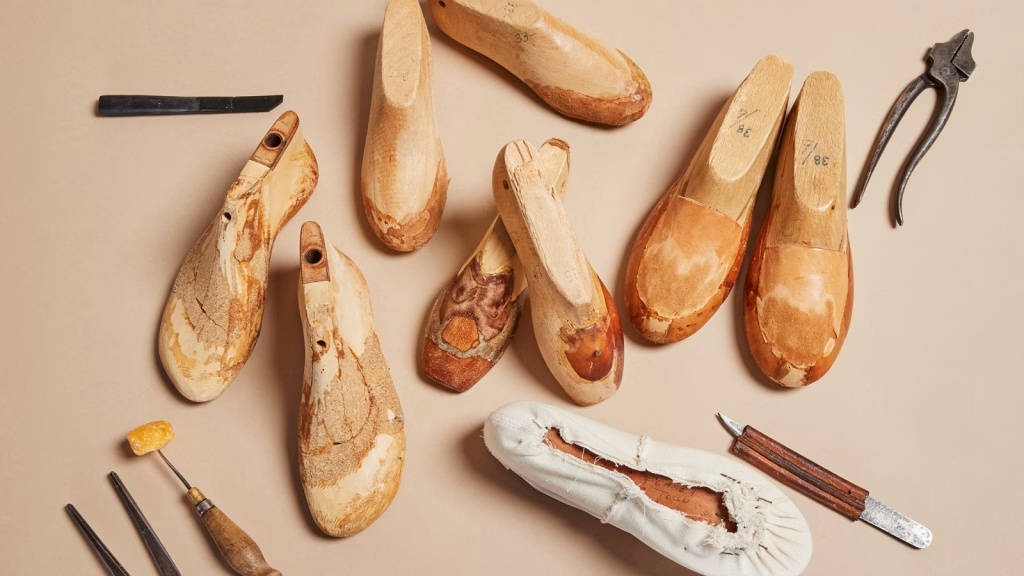
Supernatural characters take centre stage
The Romantic movement of the 19th century was also reflected in ballet. Emotions prevailed over rationality, and nostalgia for the past and supernatural creatures were common themes. Ballet reached new heights in popularity. Some of the most significant ballets of the Romantic era were La Sylphide and Giselle, which are both still regularly performance by leading ballet companies.
To begin with, ballerinas could only rise up on their toes for a moment, but soon ballet shoes evolved to give more support to the feet and toes. Several methods were used to reinforce the toe of the shoe. This was usually done with extra layers of fabric, often hardened with glue, such as starch.
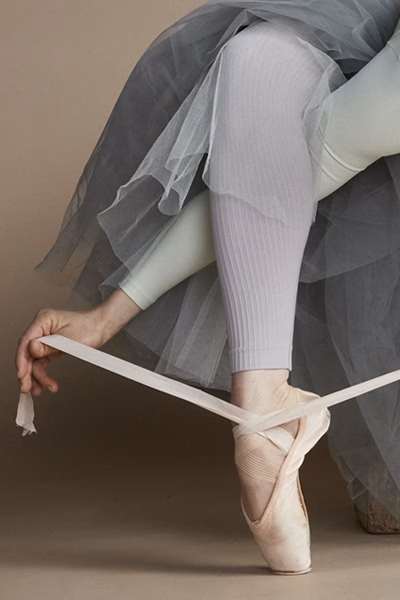
In 1823, the Italian ballerina Amalia Brugnoli rose up on pointe in Armand Vestris’s ballet La Fée et le Chevalier. Brugnoli’s shoes were made of satin, with a square-shaped toe lightly reinforced with stitches. As she had to use her arms and a considerable amount of effort to get up on her toes, her dancing still lacked fluidity and grace. Still, she made an impression on other ballerinas of the time, who started to practice dancing on pointe. One of them was Marie Taglioni. She was the first ballerina to dance a full-length ballet on pointe, as her father’s Filippo Taglioni’s choreography of La Sylphide, the quintessential Romantic ballet, had its world premiere in 1832. The pioneer of pointework didn’t just use the technique to showcase her incredible virtuosity but also to convey the nature and emotions of her characters. Other Romantic-era ballerinas, particularly Fanny Elssler, developed pointework even further in the years that followed.
Italian ballet shoes for Russian ballet
Europe was in political and financial turmoil in the mid 19th century, which gradually reduced the popularity of ballet. Happily, the genre was gaining ground in the protection of the Czar in Russia. Many European ballet influencers affected this development, including Marius Petipa, who had moved from Marseille to Russia in 1847 and has even been titled the father of classical ballet. The world premieres of most of the iconic works of classical ballet also took place in Russia, such as Swan Lake, The Nutcracker and the Mouse King, Don Quixote, La Bayadère, and The Sleeping Beauty. All of these were choreographed by Marius Petipa, who created Swan Lake in collaboration with his Russian colleague Lev Ivanov.
Italian shoemakers fuelled the development of pointe shoes in the late 19th century. The toes of their ballet shoes featured boxes made from newspaper, flour paste and cardboard, with insoles reinforced with leather. They enabled Italian dancers to execute more impressive moves on pointe, including sustained balances and multiple pirouettes. These virtuoso ballerinas travelled to perform in Russia and ultimately inspired Marius Petipa to incorporate pointework in his ballets. To him, it was a method of interpretation and character definition. In The Sleeping Beauty, for example, Princess Aurora’s long balances on pointe illustrate her aristocratic poise.
New materials and methods
The legendary Anna Pavlova (1881–1931), who had very flexible and unstable arches, added leather soles in her pointe shoes for extra support. When she first performed in the United States, she outfitted her ballet company in shoes made by Salvatore Capezio, the shoemaker of the Metropolitan Opera. In this way, she helped launch the first ever international ballet shoe brand, which still exists. As a thank you gesture, Salvatore Capezio named a ballet shoe in her honour: La Pavlova.
Today, the latest scientific advances shape the evolution of ballet shoes, which must adapt to the technical challenges posed by the new generation of choreographers. Thanks to innovative materials and shock absorption technologies, also used in the manufacturing of trainers, ballet shoes now last longer and fit better than ever.
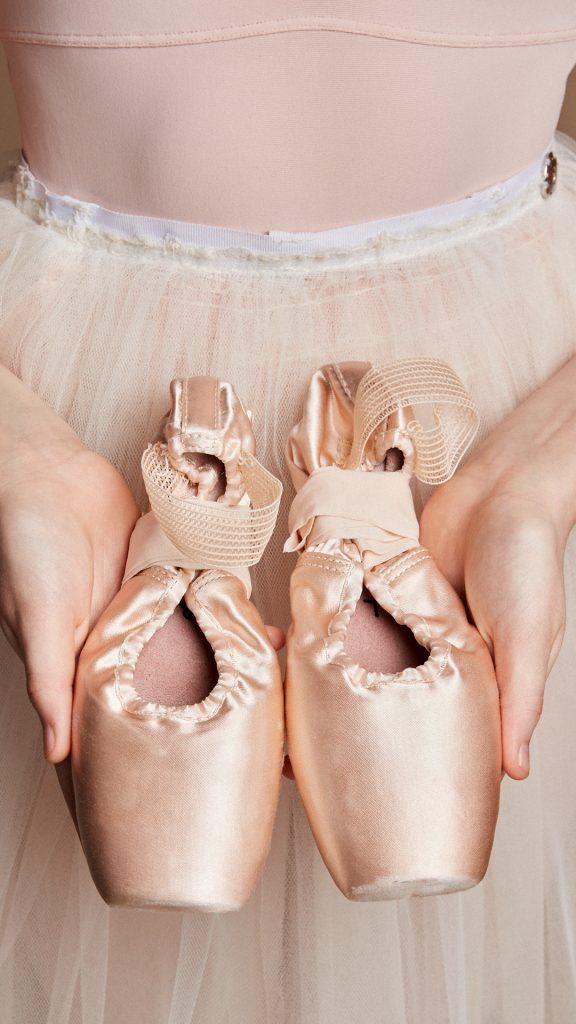
In the 20th century, the choreographers of Ballets Russes, George Balanchine, and later on also William Forsythe, led the way in creating a new, totally abstract form of expression. Ballet technique advanced, and choreographers wanted to challenge dancers to perform even more ambitious technical feats. Movements that stretched the physical limitations of the body demanded stronger, more supportive shoes. Designs like the flat, platform box we are familiar with today were developed to give dancers additional security and control.
The advances in dance medicine and research have also led to safety improvements to pointework. Contemporary pointe shoes support the foot on all sides, so that weight is spread evenly rather than putting all the strain on the toes. As each dancer is an individual, every shoe manufacturer also offers a wide range of models.
Pointe shoes have come a long way, from the heeled satin shoes of the Renaissance period to today’s modern shoes comprising materials from polyurethane to silver ions. Many manufacturers, however, still use the traditional ’recipe’ of Italian shoemakers of the late 19th century, creating their shoes from fabric, paper, cardboard, leather, and glue. What matters most is that each ballerina finds a pair that fits her feet perfectly, allowing her to express countless stories through her pointe technique.
Text HEIDI ALMI
Photos JONAS LUNDQVIST
Recommended for you
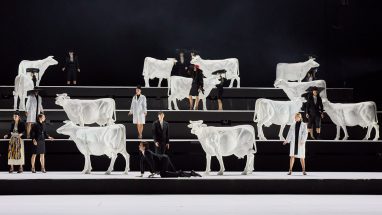
COW

Javier Torres's new, stronger Giselle
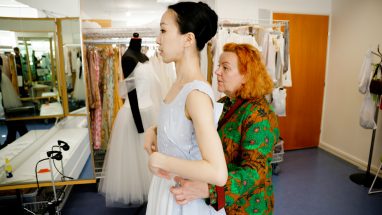
Giselle’s costumes inspired by old Italian photographs
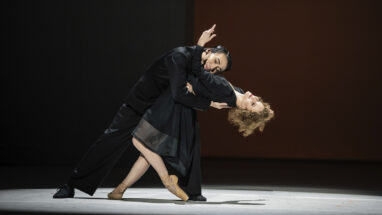
Édith Piaf – La vie en rose: Behind the Scenes with the Creative Team
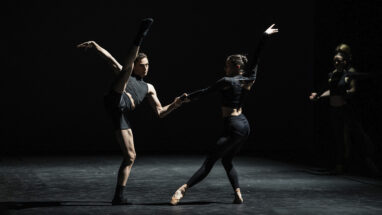
Behind the scenes: Blushing
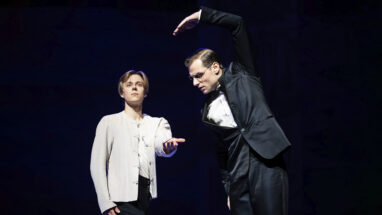
Death in Venice: insights from the choreographer and dancers
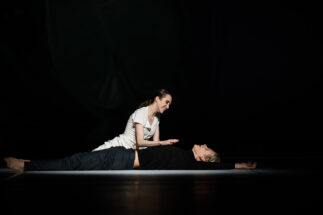
Thomas Mann and the anatomy of longing
